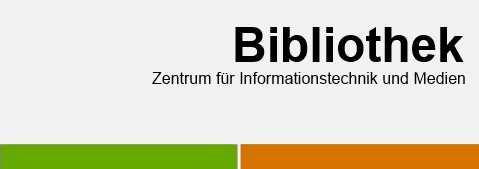Informatik und Kommunikation
Filtern
Erscheinungsjahr
Dokumenttyp
Sprache
- Englisch (51) (entfernen)
Schlagworte
- Robotik (8)
- Flugkörper (7)
- UAV (7)
- Rettungsrobotik (5)
- Erweiterte Realität <Informatik> (3)
- Augmented Reality (2)
- Human-Robot Interaction (2)
- Twitter <Softwareplattform> (2)
- 360° Panorama (1)
- Alternative Geschäftsmodelle (1)
Institut
In the realm of digital situational awareness during disaster situations, accurate digital representations,
like 3D models, play an indispensable role. To ensure the
safety of rescue teams, robotic platforms are often deployed
to generate these models. In this paper, we introduce an
innovative approach that synergizes the capabilities of compact Unmaned Arial Vehicles (UAVs), smaller than 30 cm, equipped with 360° cameras and the advances of Neural Radiance Fields (NeRFs). A NeRF, a specialized neural network, can deduce a 3D representation of any scene using 2D images and then synthesize it from various angles upon request. This method is especially tailored for urban environments which have experienced significant destruction, where the structural integrity of buildings is compromised to the point of barring entry—commonly observed post-earthquakes and after severe fires. We have tested our approach through recent post-fire scenario, underlining the efficacy of NeRFs even in challenging outdoor environments characterized by water, snow, varying light conditions, and reflective surfaces.
In this paper, we present a method for detecting objects of interest, including cars, humans, and fire, in aerial images captured by unmanned aerial vehicles (UAVs) usually during vegetation fires. To achieve this, we use artificial neural networks and create a dataset for supervised learning. We accomplish the assisted labeling of the dataset through the implementation of an object detection pipeline that combines classic image processing techniques with pretrained neural networks. In addition, we develop a data augmentation pipeline to augment the dataset with utomatically labeled images. Finally, we evaluate the performance of different neural networks.
The video shows a very high resolution 3D point cloud !!! of the outdoor area of the German Rescue Robotics Center. For the recording, a 25-second POI flight was performed with a Mavic 3. From the 4K video footage captured during this flight, 77 images were cropped and localized within 4 minutes using colmap and processed using Neural Radiance Fields (NeRF). The nerfacto model of Nerfstudio was trained on an Nvidia RTX 4090 for 8 minutes. In summary, a top 3D model is available to task forces after about 13 minutes. The calculation is performed locally on site by the RobLW of the DRZ. The video shown here shows a free camera path rendered at 60 hz (Full HD).
Problem
- How to effectively use aerial robots to support rescue forces?
- How to achieve good flight characteristics and long flight times?
- How to enable simple and intuitive control?
- How to efficiently record image data of the environment?
- How to generate flight and image data for rescue forces?
Implementation:
The flying robot was designed in Autodesk Fusion360. In order to achieve high stability as well as low weight, the frame was milled from carbon. Mounts such as for GPS and 360° camera were 3D printed. A special feature is that the flying robot is not visible in the panoramic view of the 360° camera. The flight controller of the robot was set up using Ardupilot. The communication with the robot is done via MAVLink (UDP).To support different platforms, a software was realized as a web application. The front end was created using HTML, CSS and Javascript.
The back end is based on Flask-Socket-IO (Python). For the intelligent recognition of motor vehicles a micro controller with an integrated camera is used. For the post-processing of flight and video data a pipeline was implemented for automation.
The disruptive nature of the changing media landscape and technology-driven advances in communication have led to innovative ways of organizing work in the information and communication industry. This reorganization of work is reflected in the concept of New Work, which rethinks working concepts, styles, and employee behavior. Based on a survey among staff in the information and communication industry (n = 380), this study investigates the status quo of the implementation of New Work measures and their effectiveness in helping companies reach organizational goals. The results show that New Work measures are widely adopted although there is still unused potential. Moreover, the study demonstrates that the implementation of New Work measures supports companies in achieving New Work goals as well as overall organizational goals in the contexts of agile management, change management, internal communication, and evaluation.
Media Brand Management
(2022)
The management of media brands faces challenges. In order to be able to point out possible solutions, this article first explains the concept and the nature of “media brands.” Subsequently, various theoretical approaches to the explanation of media brands and their management are presented. Regardless of theoretical preferences, it is important to keep in mind the brand-strategic complexity of media management that is subsequently described. Due to their specificity, special attention is paid to the basic strategic positioning options and to the communication management of media brands. In this way, the special features of media brand management become clear in comparison with other products and services.
Robot arms are one of many assistive technologies used by people with motor impairments. Assistive robot arms can allow people to perform activities of daily living (ADL) involving grasping and manipulating objects in their environment without the assistance of caregivers. Suitable input devices (e.g., joysticks) mostly have two Degrees of Freedom (DoF), while most assistive robot arms have six or more. This results in time-consuming and cognitively demanding mode switches to change the mapping of DoFs to control the robot. One option to decrease the difficulty of controlling a high-DoF assistive robot arm using a low-DoF input device is to assign different combinations of movement-DoFs to the device’s input DoFs depending on the current situation (adaptive control). To explore this method of control, we designed two adaptive control methods for a realistic virtual 3D environment. We evaluated our methods against a commonly used non-adaptive control method that requires the user to switch controls manually. This was conducted in a simulated remote study that used Virtual Reality and involved 39 non-disabled participants. Our results show that the number of mode switches necessary to complete a simple pick-and-place task decreases significantl when using an adaptive control type. In contrast, the task completion time and workload stay the same. A thematic analysis of qualitative feedback of our participants suggests that a longer period of training could further improve the performance of adaptive control methods.
Nowadays, robots are found in a growing number of areas where they collaborate closely with humans. Enabled by lightweight materials and safety sensors, these cobots are gaining increasing popularity in domestic care, where they support people with physical impairments in their everyday lives. However, when cobots perform actions autonomously, it remains challenging for human collaborators to understand and predict their behavior, which is crucial for achieving trust and user acceptance. One significant aspect of predicting cobot behavior is understanding their perception and comprehending how they “see” the world. To tackle this challenge, we compared three different visualization techniques for Spatial Augmented Reality. All of these communicate cobot perception by visually indicating which objects in the cobot’s surrounding have been identified by their sensors. We compared the well-established visualizations Wedge and Halo against our proposed visualization Line in a remote user experiment with participants suffering from physical impairments. In a second remote experiment, we validated these findings with a broader non-specific user base. Our findings show that Line, a lower complexity visualization, results in significantly faster reaction times compared to Halo, and lower task load compared to both Wedge and Halo. Overall, users prefer Line as a more straightforward visualization. In Spatial Augmented Reality, with its known disadvantage of limited projection area size, established off-screen visualizations are not effective in communicating cobot perception and Line presents an easy-to-understand alternative.
360° Camera at a small UAV
(2021)


